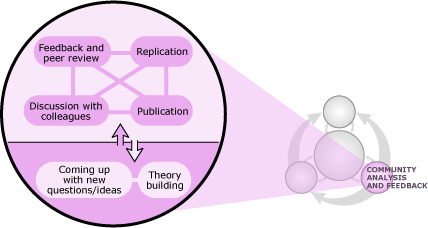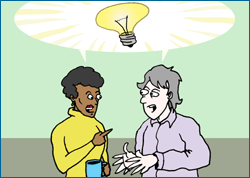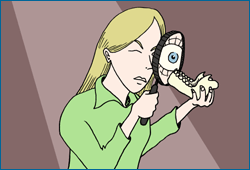The stereotype of a scientist (a recluse who speaks in a jumble of technical jargon) doesn't exactly paint a picture of someone whose work depends on communication and community, but in fact, interactions within the scientific community are essential components of the process of science. Scientists don't work in isolation. Though they sometimes work alone (fussing over an experiment in the lab, trekking through the Amazon, scribbling on a notepad at a desk), scientists are just as likely to be found emailing colleagues, arguing with other scientists over coffee, sitting in on a lab meeting, or preparing conference presentations and journal articles. In science, even those few working entirely on their own must ultimately share their work for it to become part of the lasting body of scientific knowledge.

In terms of the process of science, members of the community play several essential and direct roles:

Fact checker/critic: the community evaluates evidence and ideas. The scrutiny of the scientific community helps ensure that evidence meets high standards of quality, that all relevant lines of evidence are explored, and that judgments are not based on flawed reasoning.

Innovator/visionary: the community generates new ideas. Interactions within a diverse and creative community spark ideas about new lines of evidence, new interpretations of existing data, new applications, new questions, and alternate explanations — all of which help science move forward.

Watchdog/whistleblower: the community helps eliminate bias and fraud by keeping watchful eye. Though fraud is rare and bias often unintentional, the occasional cases of such offenses are detected through the scrutiny and ongoing work of the scientific community.

Cheerleader/taskmaster: the community motivates scientists. The community offers the prospects of recognition, esteem, and a scientific legacy — payoffs which help motivate many scientists in their investigations.
Interactions within the scientific community and the scrutiny they entail take time and can slow the process of science. However, these interactions are crucial because they help ensure that science provides us with more and more accurate and useful descriptions of how the world works.
So how, exactly, does the scientific community manage to play all these challenging roles? To learn more about key features of community analysis — publication, peer review, and replication — read on ...